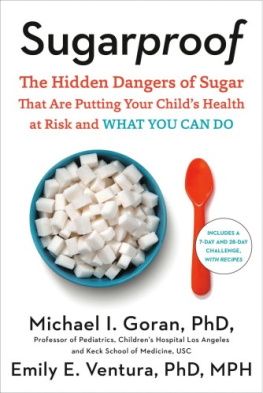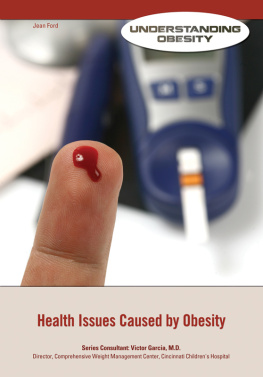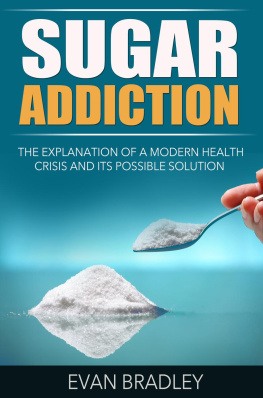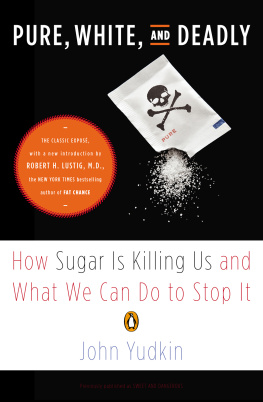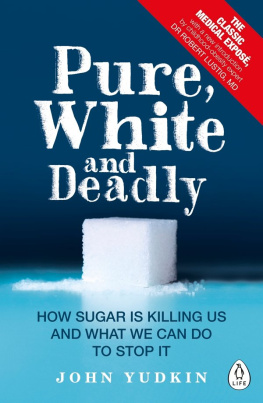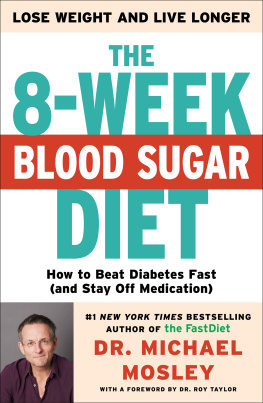Annotation
****A leading childhood nutrition researcher and an experienced public health educator explain the hidden danger sugar poses to a child's development and health, and offer parents an essential 7- and 28-day "sugarproof" program.**** Though he has long studied the effects of childhood obesity, USC professor and Program Director for Diabetes and Obesity at Children's Hospital of Los Angeles, Michael Goran, found something shocking when he and his team started to look at the sugary foods kids love: the nutrition labels on apple juice, flavored yogurts, and sodas weren't telling a complete story. His testing revealed the products had more sugar than advertised and different types of sugar than were being disclosed. Goran realized: today's children aren't just consuming more sugar, they're consuming more types of sugar than ever before, ones that are uniquely harmful to growing livers, hearts, and brains-- *and their parents don't even know it*. Most of us know...
an imprint of Penguin Random House LLC
penguinrandomhouse.com
Copyright 2020 by Michael I. Goran and Emily Ventura
Penguin supports copyright. Copyright fuels creativity, encourages diverse voices, promotes free speech, and creates a vibrant culture. Thank you for buying an authorized edition of this book and for complying with copyright laws by not reproducing, scanning, or distributing any part of it in any form without permission. You are supporting writers and allowing Penguin to continue to publish books for every reader.
ISBN 9780525541196
Ebook ISBN 9780525541202
Neither the publisher nor the author is engaged in rendering professional advice or services to the individual reader. The ideas, procedures, and suggestions contained in this book are not intended as a substitute for consulting with your physician. All matters regarding your health require medical supervision. Neither the author nor the publisher shall be liable or responsible for any loss or damage allegedly arising from any information or suggestion in this book.
The names of all clinical research study participants, parents, and other children we have worked with have been changed to retain confidentiality.
The recipes contained in this book are to be followed exactly as written. The publisher is not responsible for your specific health or allergy needs that may require medical supervision. The publisher is not responsible for any adverse reactions to the recipes contained in this book.
pid_prh_5.5.0_c0_r0
CONTENTS
INTRODUCTION
PART ONE: This Is Your Child on Sugar
CHAPTER 1:
Growing Up Sweet Can Turn Sour:
All
Our Kids Are at Risk
CHAPTER 2:
Not All Sugars Are Created Equal: The Many Disguises of Sugar
CHAPTER 3:
Hyperactive, Moody, Angry, Sleepy, and Still Hungry: Children on Sugar
CHAPTER 4:
Smarter without Sugar: Sugars Effects on Learning, Memory, and the Growing Brain
CHAPTER 5:
From Teeth to Toes and Everything in Between: How Sugars and Sweeteners Can Damage the Vital Parts of Growing Bodies
PART TWO: Sugarproof Your Child... and Your Family
CHAPTER 6:
Sweet Talk: Motivate Your Family for Success
CHAPTER 7:
Cutting Sugar: Seven Sugarproof Strategies That Work
CHAPTER 8:
The 7-Day No-Added-Sugar Challenge: Sugarproof in One Week
CHAPTER 9:
The 28-Day Challenge: A Gradual Plan for Rightsizing Sugar
CHAPTER 10:
Keep This (Not-So-) Sweet Thing Going: How to Grow the Sugarproof Movement
PART THREE: The Sugarproof Kitchen: Recipes and Tips
ACKNOWLEDGMENTSINDEX
Introduction
I remember the day I decided to write Sugarproof. At the time, I was leading a team at the Childhood Obesity Research Center, which I founded at the University of Southern California. For over thirty years, my research has focused on understanding the causes and consequences of obesity in children and how nutrition in early life, even in healthy children, can affect long-term disease risk into adulthood. Over the years, Ive seen diet trends come and go, but for me its all about the data.
On most days, Im at my desk looking at results from studies involving children who suffer from weight gain and its associated health problems like diabetes, cardiovascular disease, and liver disease. I work to uncover the links between diet and health during infancy and childhood, and then I design and test unique interventions to address these problems. As a nutrition scientist, my hope is always that the raw numbers I love so much will ultimately help us discover how to best prevent the damage that these diseases and disorders do to our children using nutritional approaches. With all sorts of measurement tools like dietary assessments, specific blood tests, MRI scans, body composition measures, and DNA sequencing to test genetic differences and gut microbiome differences, I look for answers through patterns in the data.
But on this day, a different kind of data crossed my desk. What I saw that morning were the results of a laboratory analysis that Id commissioned, one that looked at products that children love: sweetened beverages, juices, and yogurts. The products I studied included the obvious choices like Coca-Cola, Sprite, and 7UP as well as a broad range of juice drinks popular with kids, including Capri Sun, apple juice, and the orange drink Tampico. The analysis also included snacks and breakfast foods like Go-Gurt and other yogurts, and sweetened breakfast cereals. I knew that these foods and drinks were high in sugar. But I wanted to know more about the different types of sugars that might be hidden in them, the ones nutrition labels are not required to disclose. I had a very simple question: What exactly are in these products that we are routinely feeding to our children?
The results made my jaw drop. In many cases, the overall amount of sugar in the products was higher than was listed on the food labels. Worse yet, I saw a disturbing amount of hidden fructose in these products. Fructose is a cheap and sweet form of sugar, with many benefits as an ingredient when used in food and beverage production. But unfortunately, more and more research shows that fructose is especially damaging to growing hearts, livers, and brains. Ive spent thirty years as a researcher, and long before this day Id seen sugar do awful things to children. I had researched sugar as a factor in chronic disease, weight gain, and behavioral problems, and Id become an advocate for families, researching interventions that can help parents rightsize their families sugar consumptionand that can even turn these diseases around. Even so, this day was a tipping point.
The cold data in front of me led to a visceral understanding: Todays children are not just consuming more sugar than ever before, theyre consuming different types of sugar, ones that are uniquely harmful to young bodiesand their parents dont know it. Even parents who try to eat healthy dont know whats in their childrens food, because its hidden on the labels, or its disguised by some other confusing name on the ingredient list. Even parents who are concerned about their childs troublesome symptoms or behaviors dont know that certain types of sugar could be a factor, because most pediatricians themselves often dont know.
Although most of us know that sugar can wreak havoc on adult bodies, many of the parents whose children participate in my research studies are shocked when they hear their childs test results. They simply cant believe it when they find out that their child has dangerously high levels of blood lipids, or that body fat has wrapped itself around their childs internal organs, or that it has even built up inside those organs. Or that sugar might help explain their childs behavioral, emotional, or learning problems.

